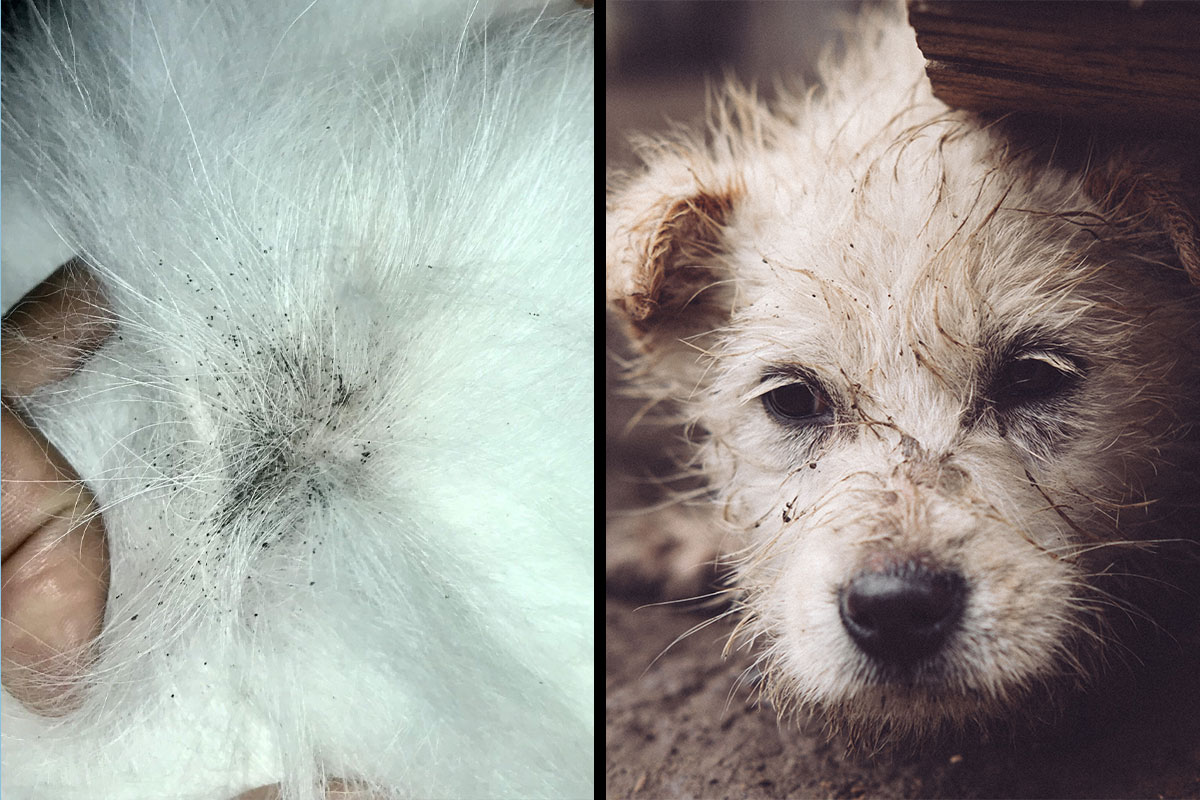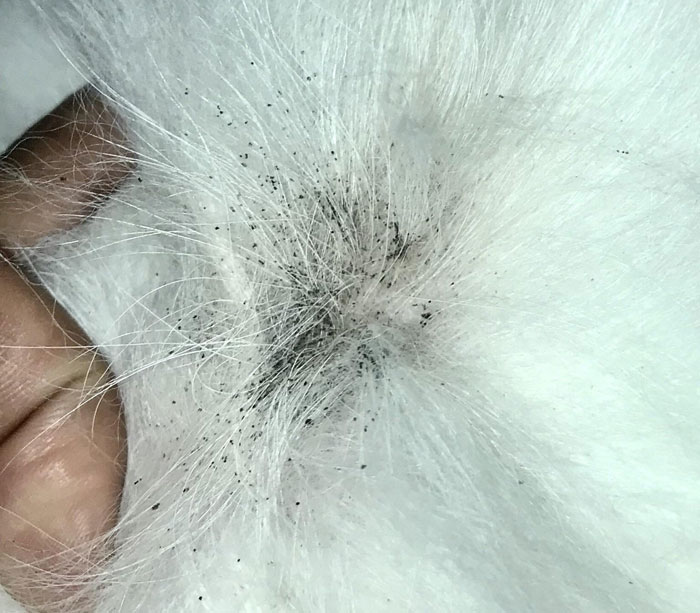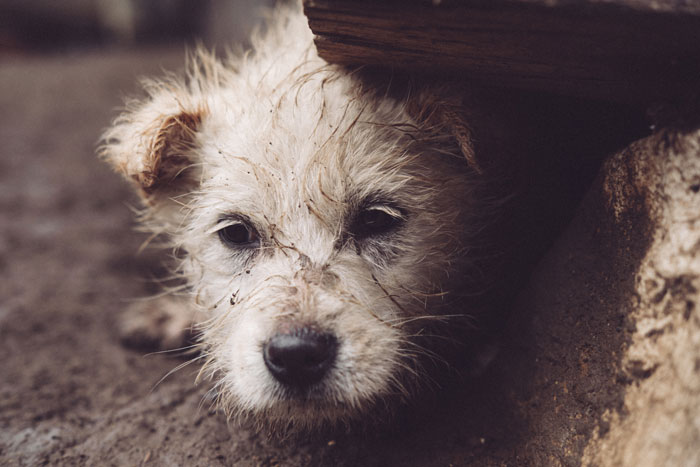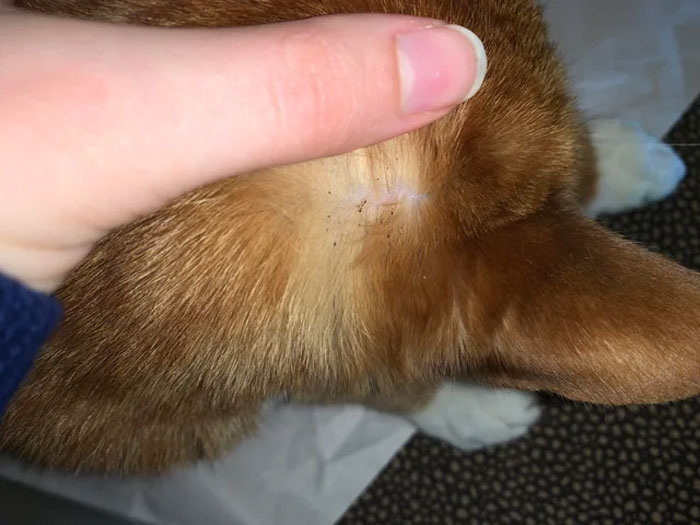
Dealing With Flea Dirt on Dogs: Identification and Removal Guide
As a dog owner, have you ever come across small, dark specks in your pet’s coat or bedding and wondered what they were? These little specks, called flea dirt, might look like regular dirt, but they’re a sign of a flea problem. Fleas are small and don’t have wings – but they can jump really high up to 200 times their own length. And this agility, coupled with their speed, often makes them elusive to the naked eye.
- Flea dirt is flea poop made of digested blood, not just regular dirt, indicating a flea problem.
- The 'paper towel flea dirt test' helps distinguish flea dirt from regular dirt using water.
- Fleas pose health risks to pets (like dermatitis and anemia) and humans (such as typhus).
- Effective flea control includes treating both pets and home environments with vet-recommended methods.
Fleas aren’t just annoying. They can make your pet feel really itchy & some animals can even have bad allergic reactions to flea bites. Moreover, these pests are not exclusive to animals; they can also bite humans, potentially transmitting diseases like typhus and plague. But by understanding the significance of flea dirt and the dangers fleas pose to both pets & owners, you can make informed and effective steps to protect your furry friends and your home.
So, keep reading to learn how to protect your beloved pet and keep your home free from fleas and flea dirt.
The information provided herein is for informational purposes only. Please refer to our disclaimer for more details..
What Is Flea Dirt?
Flea dirt, often mistaken for regular dirt, plays a crucial role in understanding flea infestations in dogs. Flea dirt isn’t just regular dirt from the ground. It’s actually flea poop, which is mostly made up of your pet’s blood that wasn’t digested by adult fleas. After these fleas have their meal from your dog – they leave behind tiny, dark droppings that look a lot like dirt, dandruff, or tiny scabs in your dog’s fur.
Characteristically, flea dirt appears as tiny, dark brown or reddish black specks, akin to coffee grounds & can be found on:
- Your dog
- Their bedding
- Carpets
- And furniture
Knowing what flea dirt looks like is key to dealing with flea problems because regular dirt from the ground is different, being black or, in some places, red like clay.
And also flea dirt not only indicates the presence of fleas but also serves as a food source for developing flea larvae. Spotting flea dirt means you can start getting rid of fleas to keep your dog happy and healthy.
Identification Test for Flea Dirt
There’s a simple way to check if what you’re seeing is flea dirt or just regular dirt. It’s called the “paper towel flea dirt test.” Take some of the specks you’re not sure about and put them on a wet paper towel. If these specks spread out and turn the paper towel reddish – then you’re looking at flea dirt.
And this happens because the poop has blood in it. If it’s just dirt or something like dry skin, the paper towel won’t change color. So this quick test can really help dog owners figure out if they’re dealing with fleas and get started on treating the problem.
Causes of Flea Dirt on Dogs
Finding flea dirt on your dog is a clear sign they’re dealing with fleas. Let’s look at what causes this annoying problem, so you can help prevent it in the future:
- Environmental Factors: Fleas thrive in warm, ambient conditions – making the indoors a prime habitat. They prefer areas with moderate humidity, so your home environment could inadvertently support their lifecycle.
- Life Cycle of Fleas: Fleas go through different stages: eggs, larvae, pupae & adults. And most of these stages happen in places around your home, not on your dog. For Example: Larvae hide in dark spots like carpet fibers and then turn into pupae, which can stay hidden for a long time.
- Outdoor Exposure: Fleas can be found in areas with tall grass or piles of brush & even in the common areas of apartment complexes where pets hang out. So these places can be hotspots for fleas.
- Home Invasion: Fleas are great at sneaking into your home. And, they can hitch a ride on your shoes, clothes, or other items and then make their way to your pet.
- Contact with Infested Animals: If your dog plays or hangs out with other animals that have fleas, like at dog parks, they can get fleas too.
Knowing about these common ways fleas get around is key to stopping them and keeping your dog happy and healthy.
Dangers of Fleas & Flea Dirt
Flea dirt on your dog isn’t just a small problem; it’s a warning sign of bigger health risks for both your pet and you. It’s really important for dog owners to know about these dangers.
- Health Risks for Pets: Fleas can make your dog very sick. They can cause flea allergy dermatitis, which is an allergic reaction that makes dogs scratch a lot and can lead to skin infections. And fleas also spread tapeworms and can make dogs anemic by taking too much blood. So if your dog is scratching all the time – it might be because of these issues.
- Human Health Concerns: Flea dirt isn’t typically harmful to people, but it can be under certain circumstances. It carries bacteria like rickettsia, which can cause flea-borne typhus if it gets into a cut. This infection can lead to symptoms like fever, chills, body aches & more severe illnesses in rare cases. And there’s also another bacteria in flea feces called Bartonella, which can cause cat scratch disease, showing up as fever and swollen lymph nodes.
- Transmission Risks: These bacteria can be a problem not just if flea dirt gets into wounds but also if it’s breathed in or gets in your eyes. Kids can get tapeworms if they accidentally swallow a flea that’s infected.
Remember, while flea dirt might seem harmless, it’s a vital indicator of the presence of fleas, which carry far-reaching implications for the health & well-being of both pets and their human companions.
Signs of Flea Dirt on Dogs
Identifying flea dirt on your dog is crucial for their health and comfort. Staying alert to the signs can help you find and tackle flea problems quickly. Here’s what you should look out for:
- Excessive Itching: This is the first sign. If your dog can’t stop scratching, you might have a flea problem.
- Behavioral Changes: Watch for unusual behaviors such as biting at the fur or skin. This can be a reaction to the irritation caused by flea bites.
- Skin Reactions: Small red bumps that look like pimples on your dog’s skin are often flea bite marks.
- Skin Conditions: Keep an eye out for the skin getting crusty or scaly, or for “hot spots” – these are sore, red spots that seem really irritated.
- Hair Loss: Notice if your dog is losing hair, especially around their back end & legs. This can be caused by fleas.
- Fur Discoloration: Brownish staining of the fur from excessive licking is another tell-tale sign.
- Tapeworm Presence: Seeing tapeworms in your dog’s poop could mean they have fleas, as fleas often carry tapeworm eggs.
When checking your dog, gently move their fur apart and look at the base of the hairs. Because fleas and their dirt like to hang out in specific spots, like:
- The lower back
- near the tail
- Groin
- Belly
- And legs
A flea comb can really help grab flea dirt and even catch some fleas. And always comb in the direction the fur grows for the best shot at finding them.
By keeping an eye on these signs and checking your dog regularly, you can spot fleas early. This means you can keep your furry friend healthy and happy.
How To Treat Your Pet and Home for Fleas and Flea Dirt
Treating your pet and home for fleas and flea dirt involves a comprehensive approach. First and foremost, consult with your veterinarian for a tailored flea treatment plan for your dog. The plan will likely include a mix of the following methods to eliminate both fleas and flea dirt.
Remember, just cleaning isn’t enough. And, if there are still fleas on your pet, they’ll just keep making more flea dirt. To truly get rid of fleas, you need to treat both your pet & your living space. Here’s how:
1. Use a Flea Comb
Grab a fine-toothed metal comb and comb your dog daily to catch fleas in all their life stages. It’s best to do this over a bathtub – so you can wash away the fleas, eggs, and dirt. And after each combing session, dunk the comb in soapy water to kill the fleas. This step is super important, especially if there’s a severe infestation.
2. Medications
Talk to your vet about the best flea medicine for your dog. Options include:
- Oral Flea Medications: These are fast-acting and often start working within 30 minutes. They’re often chewable pills and can also protect against ticks.
For quick short-term relief, you can use over-the-counter meds like Capstar® and Advantus®, but they only kill adult fleas.
- Topical Flea Medications: These are liquids you put on your dog’s skin, usually on their neck so they can’t lick it off. And they might take a bit longer to work (12–48 hours). You can find options like Frontline Plus® in stores, but your vet might suggest stronger ones.
Note: These medications should only be used on your veterinarian’s recommendation.
3. Flea Shampoo and Sprays
Shampoos and sprays offer quick relief by killing fleas on contact. However, they don’t keep fleas away for long. Pair them with stronger meds for both immediate & long-term flea control. Use water and a brush to help loosen clumps of fur that might be trapping flea dirt.
4. Treating the Home
Fleas and their dirt can hide in your house, too. Regular vacuuming of floors, furniture, pet beds & other areas where your dog spends time is crucial. Use detergents and surface disinfectants as you normally would. Flea eggs can lodge in carpets and soft furnishings – so vacuum these thoroughly and frequently. And, throw out the vacuum bag in a sealed trash can outside your house after you’re done.
5. Cleaning Bedding and Furniture
Clean Bedding and Furniture: Wash all pet bedding, pillows, and blankets. If your pet sleeps on your bed, wash your bedding, too. Use hot water and dry everything with high heat or sunlight to kill fleas and eggs. And for really bad flea problems, you might need special sprays, powders, or other products for your home & yard. Make sure anything you use is safe for pets.
5. Check Other Pets
If one pet has fleas, the others probably do, too. So make sure to treat all your pets for fleas.
6. Avoid Unproven Treatments
Avoid Unproven Treatments: Stay away from “natural” or homeopathic flea treatments since they’re not proven effective and could hurt your dog. Stick to FDA-approved flea meds. Some products, like Simparica, come from natural sources and might be a good option if you’re looking for something more natural. Again, always talk to your vet to find the safest and most effective flea treatment for your pet.
When picking flea control products, it’s really important to choose ones that are right for your pet’s type, size, and health.
How To Prevent Fleas and Flea Dirt
Keeping your dog free from fleas and flea dirt is super important for their health and for keeping your house clean. Here’s how to do it:
- Talk to Your Vet: First, see your vet to pick out the best flea-prevention medicine. You might use collars, pills, or creams that go on their skin & you’ll need to reapply them regularly – like every month or a few months.
- Check Your Dog Often: Always check your dog for fleas, especially if they’ve been around other animals or outside. And this means combing or brushing their fur and looking for signs of flea dirt.
- Home Maintenance: Keep your pet’s bedding clean and vacuum high-risk areas frequently to minimize the chances of flea infestation.
- Use Medicine All Year: Fleas can show up any time of year, not just in warm months. So keep using flea and tick meds all year, particularly if your pet has flea allergy dermatitis.
- Keep Wildlife Away: Try to keep wild animals like mice and opossums out of your house & steer clear of stray animals, to lower the chance of fleas coming in.
- Treat All Your Pets: If you have more than one pet, make sure they all get flea treatments regularly, even if some don’t go outside much.
Sticking to these steps can help lower the chance of your dog getting fleas and making flea dirt.
Conclusion
Dealing with flea dirt on dogs is a vital aspect of responsible pet ownership. Knowing what flea dirt is, how to spot it, and how to get rid of it is important for keeping your dog happy and healthy. Often, finding flea dirt is the first hint that fleas are around – so acting fast is key. The paper towel test is a simple way to tell apart flea dirt from just regular dirt. And remember, getting ahead of the problem and keeping up with ways to prevent fleas are the best steps to take care of your dog’s well-being. So by paying attention & following the advice we’ve talked about, you can make sure your furry buddy stays free of fleas and comfy. Let’s use this info to make life better for our dogs!
1Kviews
Share on Facebook Image credits:
Image credits:  Image credits:
Image credits:  Image credits:
Image credits: 












-4
0